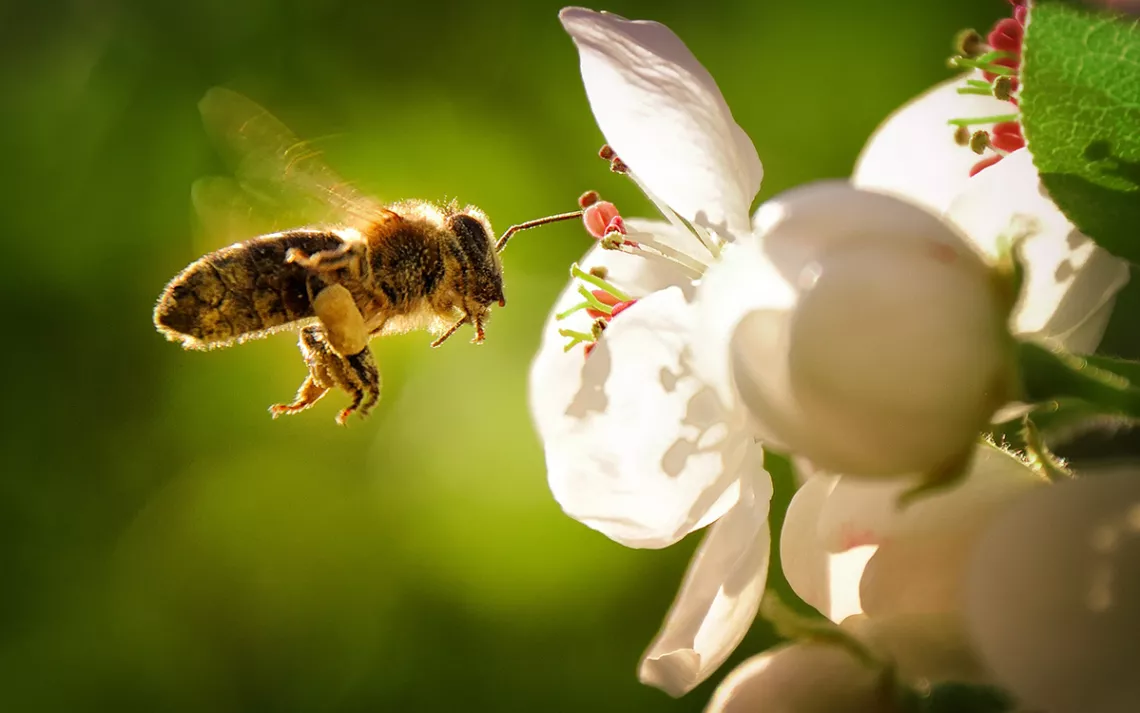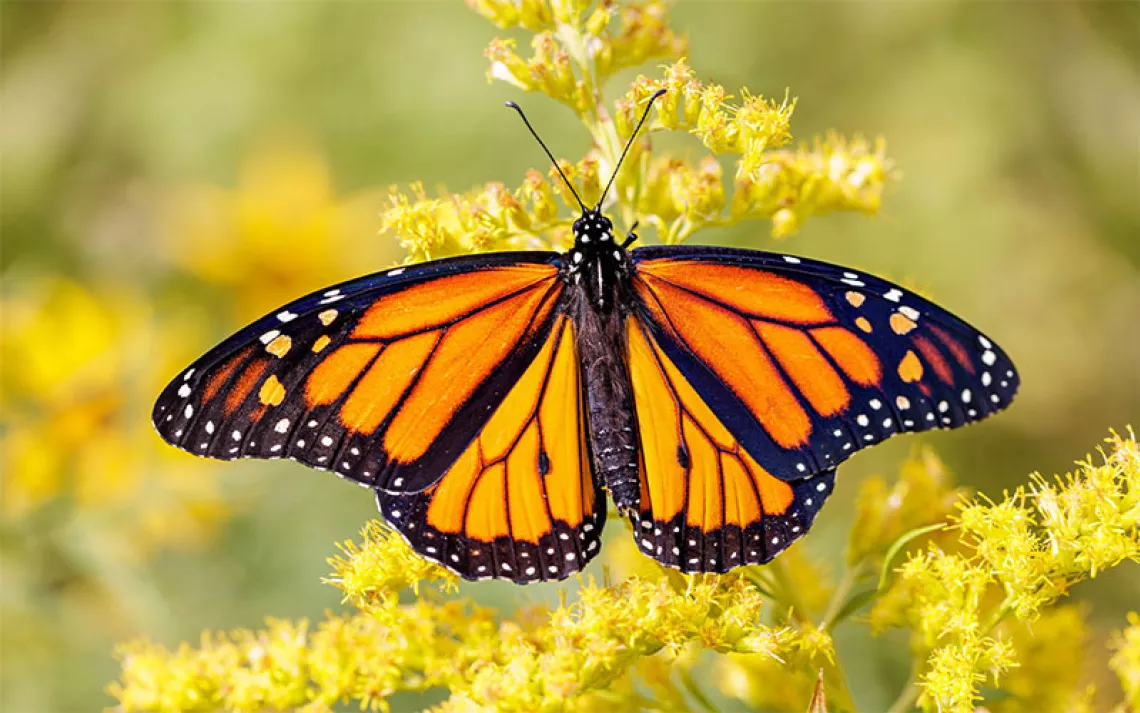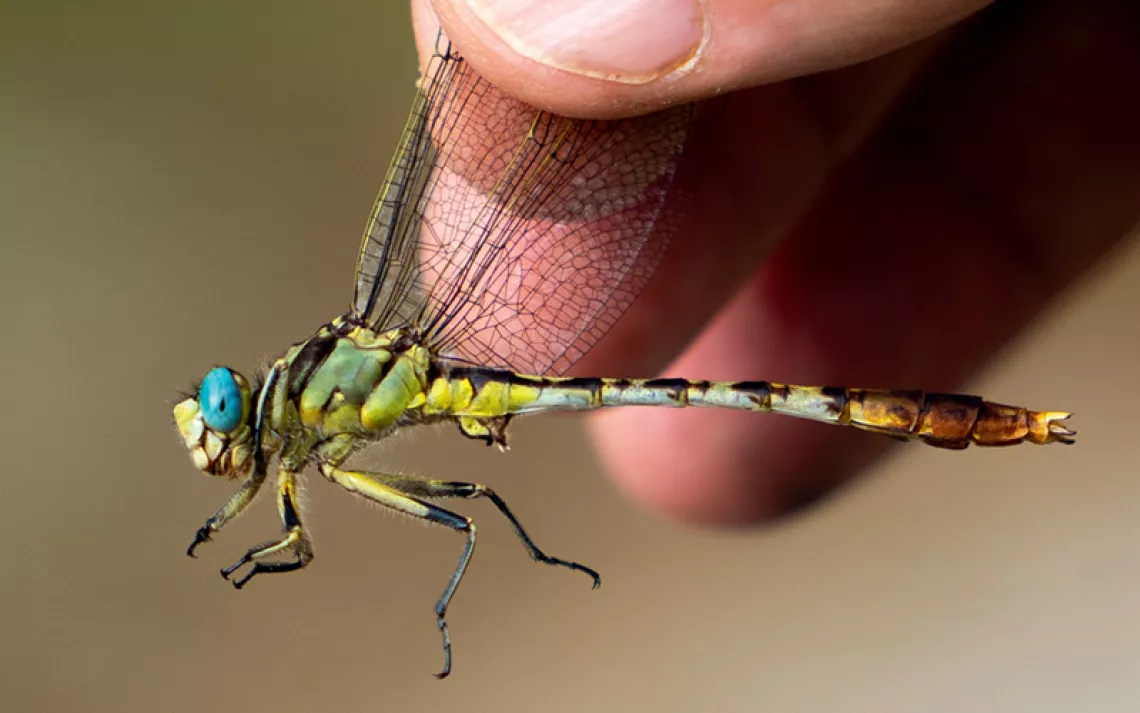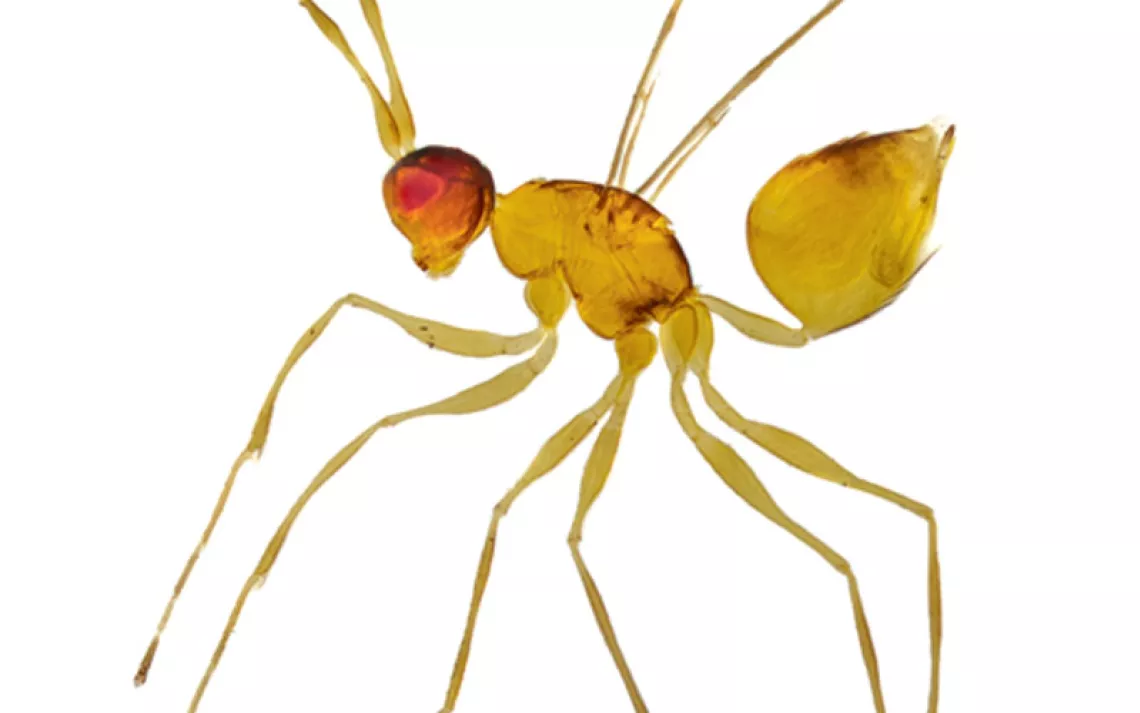Conservation Efforts Have a Massive Blind Spot
How creating protected areas for insects could help stem the biodiversity crisis

Everything is blooming, and the bees are diligently flying from flower to flower. | Photo by Susanne Schulz/iStock
Earth’s biodiversity crisis is staggering. By one estimate, there’s been a near 70 percent decline in wildlife species populations since 1970. But one taxon, in particular, is suffering at an astounding scale: insects. According to some estimates, the world has lost 5 to 10 percent of its insect population in the last 150 years, about 250,000 to 500,000 species.
This is a problem because insects underpin biodiversity, pollinating crops, dispersing seeds, and supporting the rest of the food chain. Despite their role in keeping Earth functioning, three-quarters of insect species are insufficiently represented by the world’s protected areas, according to a paper published earlier this month in the journal One Earth.
“This is a bit concerning,” said Shawan Chowdhury, an author on the paper and postdoctoral researcher at the German Center for Integrative Biodiversity Research. “Insects are the center of ecosystem function.” Without insects, he added, the resulting gap in the world’s ecosystems could cause further biodiversity loss and contribute to food insecurity for humans too.
Chowdhury and his colleagues mapped the distribution of all known insect species, then measured the extent to which their habitats overlapped with the world’s protected areas, defined as a geographical space that is recognized, dedicated, and managed to achieve the long-term conservation of nature. Protected areas included national parks, wildlife refuges, and nature reserves across the globe.
They found that 67,384 species of insects—about 76 percent—did not have sufficient protected areas. The authors write that the shortfall is “much more severe” than the results of a similar study on vertebrates, which showed that 57 percent of vertebrate species did not have adequate protected areas. The team also found that the ranges of nearly 1,900 species of insects did not overlap with protected areas at all. In Central Europe, Africa, and much of South America, the percentage of insect species sufficiently covered by protected areas was relatively high compared to North America, much of Asia, and Eastern Europe, where protected area coverage was lower.
Chowdhury said his team isn’t sure why there’s such a difference between insects and other taxa, but that the results clearly show a lack of consideration of insects when decision-makers designate protected areas. Protected areas are sometimes chosen for their value for human enjoyment, as well, which doesn’t always translate into diverse, insect-friendly ecosystems. “In many developing parts of the world, they usually designate new protected areas where there’s open space [without] economic value,” said Chowdhury. “That could be one of the reasons that protected area coverage for many insect species is really low.”
The human tendency to care more about those animals most similar to us—like large mammals and other vertebrates—could also be a culprit. “While large and charismatic animals tend to attract conservation attention, insects rarely do,” said Martine Maron, a professor of conservation biology at the University of Queensland in Australia, who was not involved in the new study.
“A combination of less attention and less information contributes to the problem. It is easier, when designing a protected area system, to use data on groups like mammals and birds, for which we tend to have a much better understanding of what species there are, where they occur, and which ones need conservation action,” she said. “We may hope that they provide a good proxy for other types of plants and animals, like insects—but this is usually not the case.”
One other possible explanation for the results, said Chowdhury, could be that scientists simply have far less data describing where insects live compared to the data for other types of animals.
The results surprised Chowdhury, since entomologists tend to think of protected areas as some of the best places on Earth to go looking for insects.
In response, Chowdhury and his team call for the global conservation effort to better incorporate insects into protected area designation and management. But what would an insect-smart protected area even look like, and how would it be different from existing protected areas? Making sure protected areas overlap with known insect distributions is a good first step, but there are other important considerations conservationists can make.
“We need to focus on smaller habitats: microclimates and microhabitats,” said Jeff Harvey, a population ecologist and insect expert at the Netherlands Institute of Ecology who was not involved in the new research. “We have to start seeing the world from the perspective of the small little critters that live there.”
Harvey was the lead author on a paper, published last year, which warned that the consequences of climate change would be severe for insects across the globe and offered a number of management solutions. According to the researchers, an insect-focused approach to conservation would need to prioritize spaces for insects to shield themselves from extreme temperatures, as well as ample food sources for a variety of different insect species.
One of the biggest threats to insects is climate change and extreme heat. Because insects have small body sizes and tend to be cold-blooded, it’s much harder for them to mitigate the effects of high temperatures—unlike mammals, they can’t just sweat it out. And even when extreme heat doesn’t outright kill an insect, heat can cause infertility, especially in insect males, leading to population loss.
A potential solution, wrote Harvey and his colleagues, is to ensure that small-scale “climate refugia” are protected. These climate refugia include any place where an insect can go to cool off or warm up, whether that’s under the shade of a plant, in a wind-protected area, or nearby (or in) a body of water.
Prioritizing diversity in the landscape when designating the boundaries of new protected areas helps to ensure they have these climate refugia. For example, a protected area that includes many different types of topography, such as a mixture of mountains, forests, and fields, offers insects multiple different microclimates, and multiple escape routes in the case of extreme weather. Limiting lawn mowing and leaving leaf litter on the ground is also key to providing insect habitat, said Harvey.
Since many insects are highly specialized and may only feed on one plant species, plant heterogeneity is important too. That means designating protected areas that can support different species at various stages of succession; for example, a protected area could include both an old-growth forest with lots of tall hardwood trees as well as a younger ecosystem that supports more shrubs and bushes.
“You want to have a diverse number of plants and attract a diverse number of insects,” said Harvey. “If we lose insects, we’re in deep trouble. We really need to implement solutions to create a more insect-friendly world.”
 The Magazine of The Sierra Club
The Magazine of The Sierra Club



